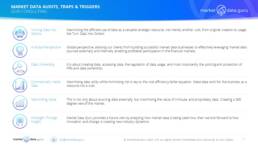
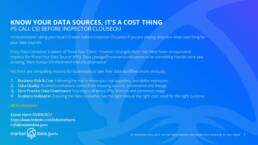
1.0 AVOIDING KNOW YOUR SOURCE COSTS MONEY
There has always been the ‘one out’ principle applied to data source management, i.e. know the immediate vendor, but less, if any, concern about who the ultimate vendor is behind that first line vendor. By implication, this means companies lack awareness of true relationship flows and therefore risk exposure in market data and dollar terms to that ultimate source sitting in the background.
This is usually caused by:
1.Business inertia
2.Management has not asked for this to be done
3.Insufficient documentation
4.Waiting for regulators to mandate the requirement
Why is this case? Especially when downstream market data vendors, ISVs, financial institutions, corporates, well everyone, is so dependent for their success of their business upon the information they ingest and consume in order to make investment decisions
2.0 KNOW YOUR SOURCE REDUCES BUSINESS RISK
The inability to understand where market data and financial information is being sourced from is a business weakness which should be addressed to meet 3 fundamental purposes.
1.Intellectual Property Rights (IPRs). Not knowing the ultimate sources of the information supplied often means market data being used out of the scope of contracts, which introduces liabilities when source owners seek to claim their dues. Market Data vendors do not voluntarily pass on the source owners’ policies, or report usage unless specifically told to do so. Naturally the major exchanges insist on compliance, but it does mean there are sources which inadequately enforce their IPRs. This is changing.
2.Understanding exposure to sources and distributors at each business level allows a better understanding of the total spend with each, and every, supplier. Increased awareness of how much is being spent on each supplier creates greater leverage for:
- Generating bulk discounts
- Leveraging the relationship for greater use of specific suppliers’ products and services
- Enhances the Buy Side/Sell Side relationship for mutual benefit
- To gain a greater understanding of the source of the information contained within blended services such as datafeeds that aggregates different types of data, i.e. indicative prices and tradable prices. While these provide a wide market view, it makes it impossible to know what type of price is being ingested into applications which then triggers say a risk or trading event, examples being OTC prices via a consolidated datafeed like an Activ or Bloomberg B-Pipe.
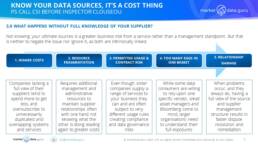
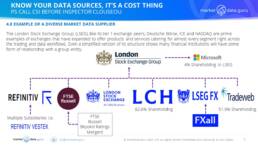
5.0 THE INEVITABLE REGULATORY IMPACTS
Regulatory impact on data sourcing and consumption is changing profoundly, somewhat subtly, but surprisingly rapidly, the marketplace for data. Previously regulators mandated institutions on how to price the market, e.g. requiring two separate sources for OTC valuations, new regulations are now pro-active by defining how and what types of prices must be sourced.
Notable cases in point include the IOSCO Principles for Index Creation with clearly defined requirements for due diligence in sourcing data, and the never ending Fundamental Review of the Trading Book (FRTB) whose data requirements are profound.
This places new and additional pressure on the data consumer to have a full understanding of 3 core data workflow attributes:
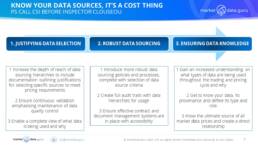
6.0 KNOW YOUR SOURCE PRACTICAL BENEFITS
KYS provides tangible benefits to the business, it increases the utility value of the data, through gaining a greater understanding of what that data is and means to decision making
1.Source knowledge improves source management, and understanding of the information flowing into and around the business
2.It reduces the resources required to manage and administer data because unknowns become knowns
3.KYS increases the ability to comply with IPRs and regulatory requirements surrounding data usage and utilisation
4.It improves cost control, and maximises revenue returns because data usage becomes a positive resource
Implementing an effective KYS strategy is straightforward. All the components exist within each business, it is a question of creating relationships by taking 4 fundamental steps
1.Profiling the sources, and related vendors, by linking the suppliers individual relationships with your business
2.Create a data inventory and register as a major component of an overall data governance strategy which is accurate and defines data hierarchies
3.Installing functional contract and document management systems. Often a major structural deficiency in exchanges, vendors, and banks
4.Maintain an up to date records system which tracks changes in relationships, and integrates with management tools
Know Your Source provides practical business benefits, reduces costs and delivers greater insights into data workflows
We advise on market data strategies, sourcing, and cost savings. Contact us today to arrange for innovative unbiased advice.
Keiren Harris
05 September 2023
For our information on our consulting services please visit www.marketdata.guru/data-compliance
Or Email knharris@marketdata.guru
General contact info@marketdata.guru and to obtain a pdf copy of the article
#data #technology #FRTB #cloud #marketdata #applications #compliance #Datasourcing
